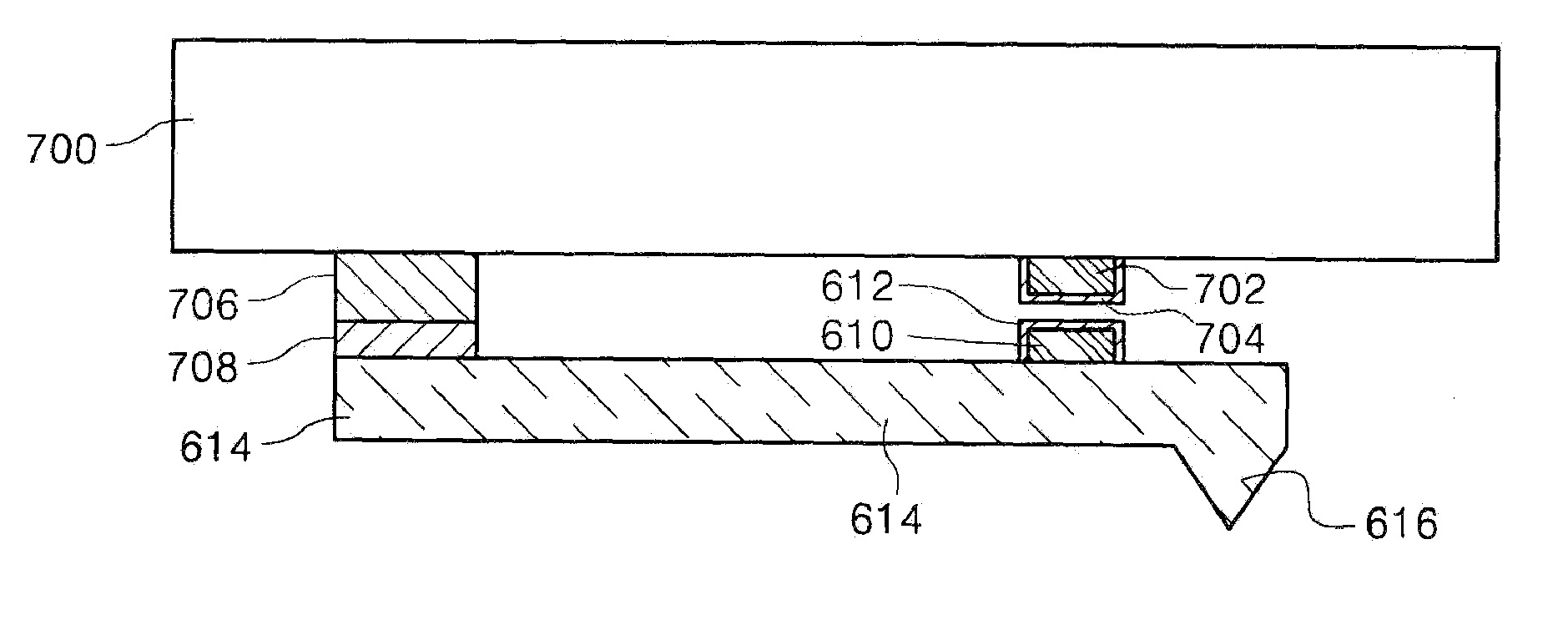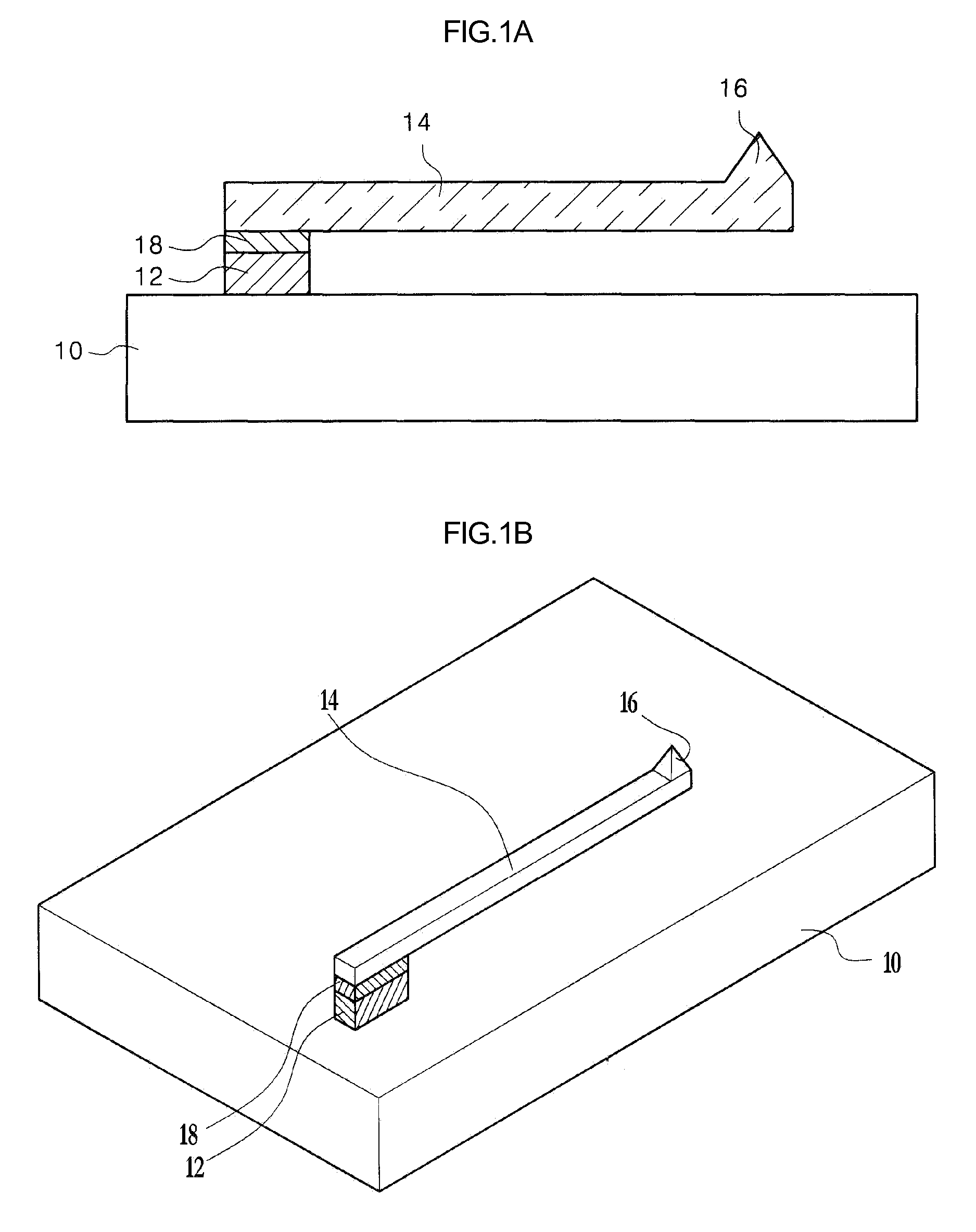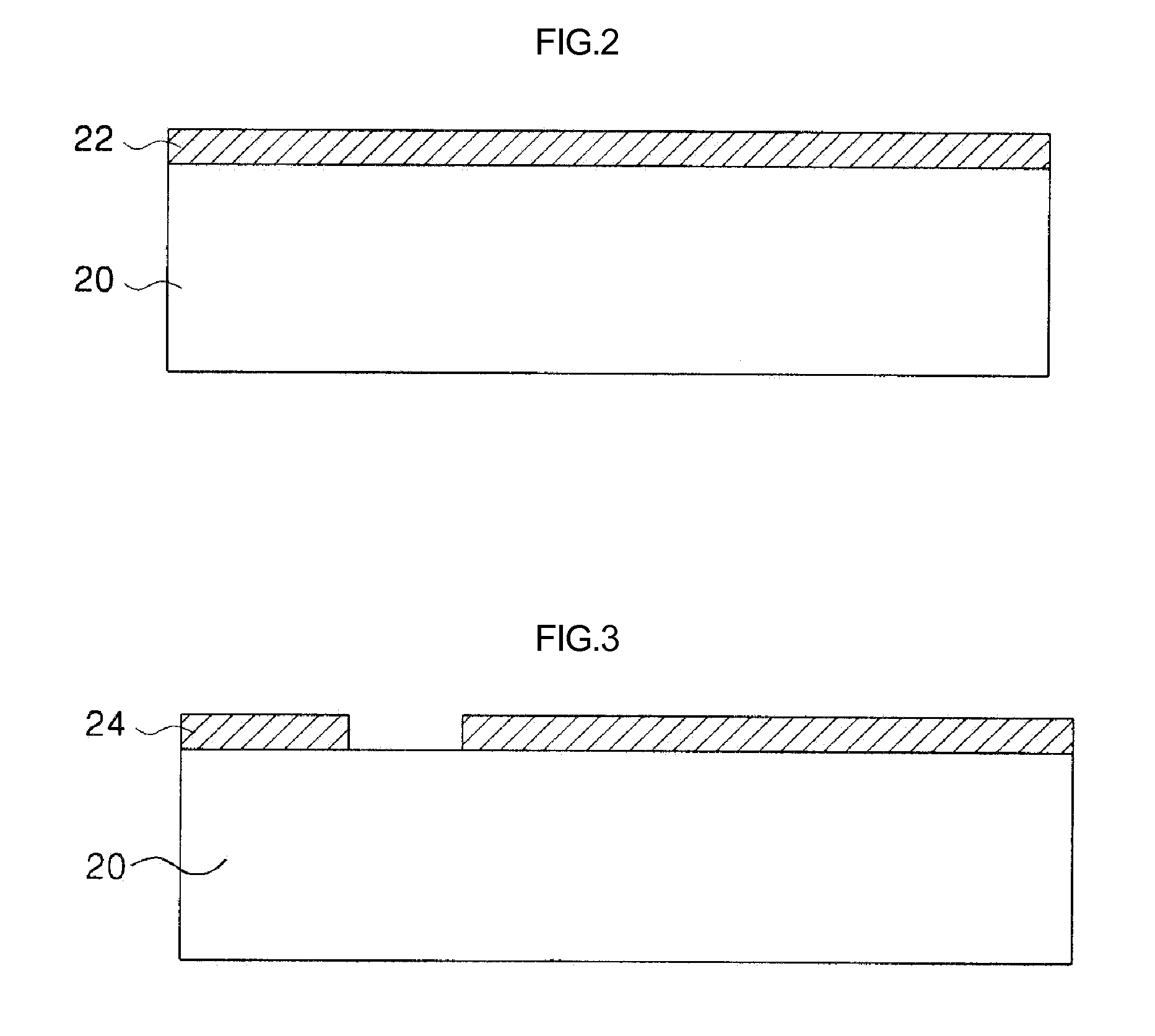Method for manufacturing electrical contact element for testing electro device and electrical contact element thereby
- Summary
- Abstract
- Description
- Claims
- Application Information
AI Technical Summary
Benefits of technology
Problems solved by technology
Method used
Image
Examples
first embodiment
[0084]FIGS. 2 through 10b are cross-sectional views explaining a method for manufacturing an electrical contact element used to test an electronic device, in accordance with the present invention.
[0085] In the method according to this embodiment of the present invention, first, as shown in FIG. 2, a first protective film 22 of a predetermined thickness is formed on an entire surface of a sacrificial substrate 20 made of silicon having a fixed orientation such as (1 0 0). The first protective film 22 comprises a thin film such as a photoresist and an oxide film. At this time, the photoresist is formed by a spin coating process in which the photoresist is poured onto the sacrificial substrate 20 while the sacrificial substrate 20 is rotated, and the oxide film is formed by the conventional thermal oxidation process.
[0086] Then, as shown in FIG. 3, by implementing a photolithography process which is well known in the art, a first protective film pattern 24 having a first opened region...
second embodiment
[0139] Hereinafter, a method for manufacturing the electrical contact element used to test an electronic device, in accordance with the present invention will be described in detail.
[0140]FIGS. 12 through 18b are cross-sectional views explaining a method for manufacturing an electrical contact element used to test an electronic device, in accordance with a second embodiment of the present invention.
[0141] In the method according to this embodiment of the present invention, first, as shown in FIG. 12, a first protective film of a predetermined thickness is formed on an entire surface of a sacrificial substrate 60 made of silicon having a fixed orientation such as (1 0 0). The first protective film comprises a thin film such as a photoresist and an oxide film. By implementing the same photolithographic process as in the aforementioned first embodiment, a first protective film pattern 62 having a second opened region (not numbered) larger than a first opened region of the first embodi...
third embodiment
[0179]FIGS. 19 through 25b are cross-sectional views explaining a method for manufacturing an electrical contact element used to test an electronic device, in accordance with the present invention.
[0180] In the method according to this embodiment of the present invention, first, as shown in FIG. 19, a first protective film of a predetermined thickness is formed on an entire surface of a sacrificial substrate 80 made of silicon having a fixed orientation such as (1 0 0). The first protective film comprises a thin film such as a photoresist and an oxide film. By implementing the same photolithographic process as in the aforementioned first embodiment, a first protective film pattern 82 having a second opened region (not numbered) larger than the first opened region of the first embodiment is defined.
[0181] Next, by implementing a first etching process using the first protective film pattern 82 as an etching mask, the sacrificial substrate 80 is isotropically etched to define a trench...
PUM
 Login to View More
Login to View More Abstract
Description
Claims
Application Information
 Login to View More
Login to View More - R&D
- Intellectual Property
- Life Sciences
- Materials
- Tech Scout
- Unparalleled Data Quality
- Higher Quality Content
- 60% Fewer Hallucinations
Browse by: Latest US Patents, China's latest patents, Technical Efficacy Thesaurus, Application Domain, Technology Topic, Popular Technical Reports.
© 2025 PatSnap. All rights reserved.Legal|Privacy policy|Modern Slavery Act Transparency Statement|Sitemap|About US| Contact US: help@patsnap.com



